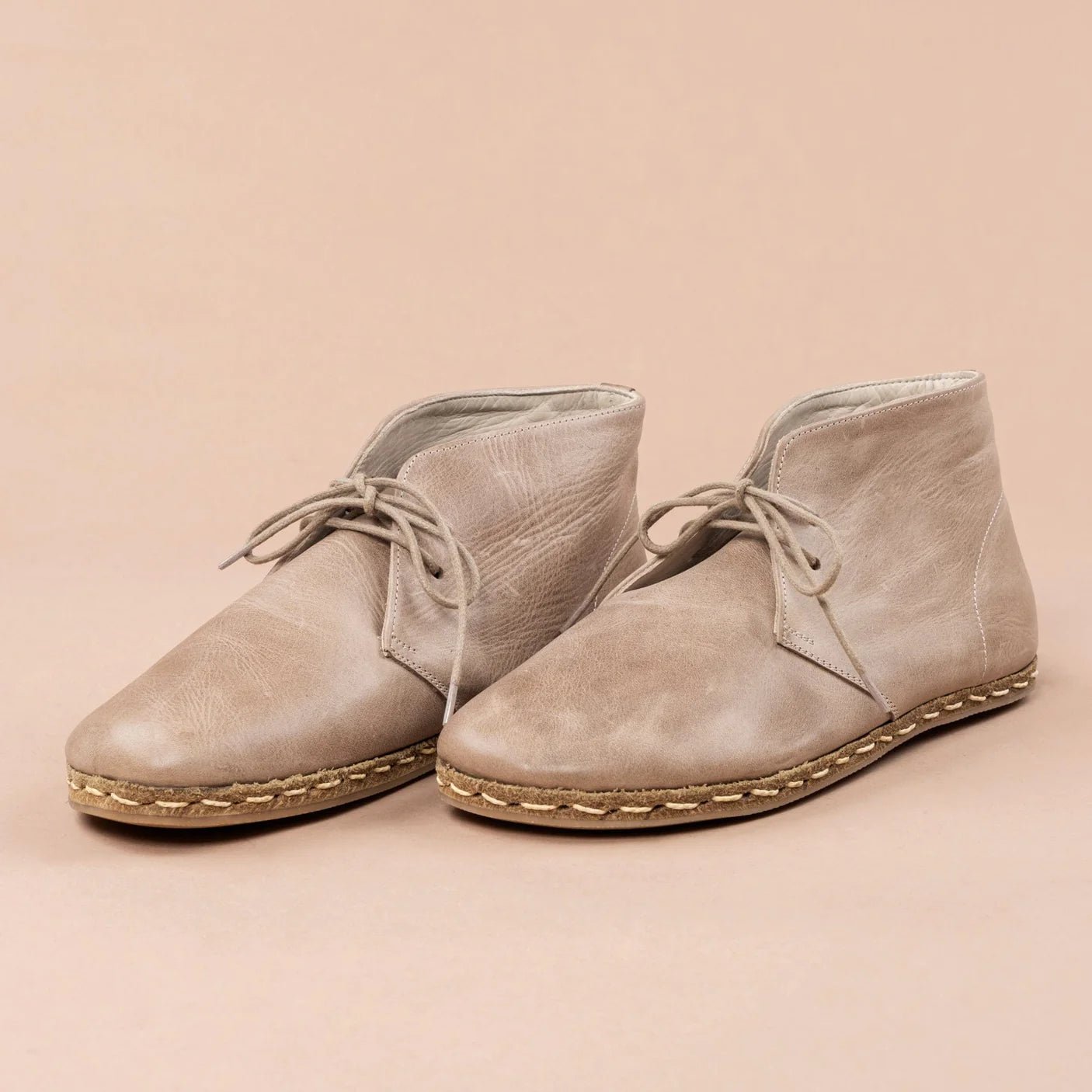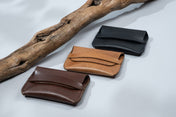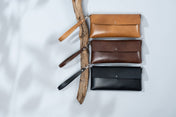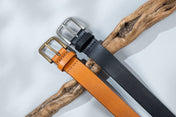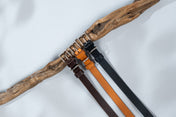In boot manufacturing, "handmade" and "handcrafted" are often used interchangeably. However, a subtle distinction exists that merits attention. Both signify a product created with a significant human touch. Nevertheless, the essence of each word is rooted in the degree of mechanical assistance utilized. While both processes embody the artisan's skill, handcrafted boots involve more machine aid than their handmade counterparts. This introduction sets the stage for a deeper exploration of how these two methods diverge, reflecting the nuanced interplay between traditional craftsmanship and modern technology.
Manufacturing Process
The creation of boots encompasses a spectrum from the entirely hand-driven to the semi-automated, with handmade boots sitting on different points along this continuum. Handmade boots are a testament to the meticulous artisanship of yesteryear, where each cut and stitch embodies the dedication and precision of the artisan. Such boots are the product of labor-intensive techniques, with craftsmen pouring hours into the assembly of each pair, ensuring a unique touch that machine-driven processes cannot replicate.
Transitioning to handcrafted boots, the process integrates a blend of the artisan's touch with the efficiency of modern machinery. The use of hand-operated machines introduces a level of uniformity and speed unattainable by hand alone without sacrificing the personal input of the craftsman. The resulting boots are a marriage of:
- The artisan's skill in areas demanding nuanced craftsmanship.
- Machine assistance is helpful in more repetitive or laborious tasks.
This synergy of handwork and machinery enables a more scalable production while maintaining a significant degree of handmade quality. Each production method has its own set of advantages, and understanding these can illuminate the value inherent in each boot type. H steeped in tradition, handmade boots offer a connection to the craft as enduring as the boots themselves. Meanwhile, handcrafted boots stand as a testament to the evolution of boot-making, where the human element remains vital yet is enhanced through technology. Both processes coexist, each catering to different aspects of the consumer's appreciation for craftsmanship and the practicalities of modern production.
Quality and Precision
Delving into the world of boot creation reveals a landscape where manual dexterity and mechanical precision intersect. In producing handmade boots, artisans dedicate themselves to a meticulous crafting process, where their adept hands are the primary tools. Here, the value lies in the distinctiveness of each pair, with the artisan's flair imbuing every stitch and cut. The result is a lineup of boots that boast exceptional quality and an exclusive character that mass production cannot replicate.
Transitioning to handcrafted boots, one finds a harmonious blend of human skill and mechanical efficiency. The machines are extensions of the artisan's hands, enhancing the crafting process without overshadowing the need for a discerning eye. The boots that emerge from this synthesis are celebrated for their uniform excellence and reliable construction, qualities that machinery helps ensure. Process, though less intimate, still retains the essence of craftsmanship:
- Skillful artisans oversee the machinery, guiding it with precision.
- Consistency in each pair is achieved without sacrificing the artisan's touch.
- The efficiency of the process does not detract from the quality of the product.
Both handmade and handcrafted boots stand as testaments to the dedication of their creators. Whether through the intimate connection of hand-to-leather or the precision of machine-assisted construction, these methods showcase the heights of quality and precision achievable in boot-making.
Customization
Personalization sits at the heart of the conversation when it comes to the art of creating boots. Those labeled as handmade boast a high degree of tailorability, as artisans mold and shape each piece to meet the wearer's desires. Artisans meticulously select materials and employ time-honored techniques, ensuring that every stitch reflects the unique specifications the customer presents.
Transitioning to handcrafted boots, the spectrum of customization remains wide, albeit not as extensive as their handmade counterparts. Within these bounds, the manual aspects of the process allow for a degree of personal touch. Key features that may be customized in handcrafted boots often include:
- Leather color and finish
- Sole type and material
- Hardware details such as buckles and eyelets
Despite the use of some machinery, artisans still apply a personal touch to these elements, offering customers a blend of bespoke and standard features. Moreover, the customization scale in handcrafted boots often depends on the manufacturer's flexibility and the machines' capability to accommodate unique requests.
Ultimately, handmade boots present options for consumers to express their style and fit preferences. The former caters to an audience seeking a fully personalized experience, while the latter provides a compromise, mixing machine precision with the artisan's discerning eye. Each method celebrates the fusion of individuality and craftsmanship, serving different needs within the market for personalized footwear.
Production Time
The chronology of crafting boots diverges markedly between handmade approaches. When artisans opt for the handmade route, the timeline stretches out. Each boot is a testament to patient labor, where the meticulous handiwork dictates a slower pace. The process embodies dedication, as each stitch and cut is performed manually, often with tools passed down through generations. This commitment to traditional methods exacts a toll on speed, inevitably prolonging production.
Conversely, handcrafted boots benefit from the integration of mechanical support. Here, precision machinery complements the artisan's skill, streamlining tasks that once took hours into mere minutes. The result is a more swift production cycle, allowing for a greater output without compromising the personal touch that characterizes artisanal work. The efficiency of this method does not merely lie in the quickness but also in the uniformity and consistency it brings to the final product.
To illuminate the differences:
- Handmade boots might take days to complete a single pair, reflecting the intensive labor involved.
- Handcrafted boots, while still requiring human oversight, see the completion of multiple pairs in the same timeframe.
The choice between these two methodologies thus hinges on balancing the valorization of time-honored techniques and the pragmatic needs of modern commerce. Each boot, be it handmade, emerges as a unique blend of time investment and craftsmanship, with production time serving as a critical differentiator in the art of boot-making.
Cost
The price tag of boots often reflects the manufacturing intricacies behind them. Handmade boots command a higher market value, not merely as a matter of prestige but due to the extensive manual effort involved. Artisans pour hours into crafting each pair, ensuring meticulous attention to detail, which limits production speed. The proficiency and dedication required to create these boots from start to finish justify their premium cost.
Conversely, handcrafted boots present a more cost-effective option. The integration of machinery in their creation streamlines the manufacturing process. It allows for a quicker turnaround without substantially compromising quality. By employing machines for certain tasks, artisans can focus on aspects of the craft that require a human touch, optimizing the balance between efficiency and artistry.
The cost considerations for each type are as follows:
- Handmade boots factor in the artisan's time and the scarcity of mass production.
- Handcrafted boots benefit from economies of scale, making them accessible to a broader market.
Moreover, introducing machinery does not negate the skill of producing handcrafted boots. It merely shifts the artisan's role from labor-intensive tasks to overseeing the precision of the machines. The savings in time and labor directly influence the final cost, passing on a financial advantage to the consumer. In conclusion, the divergence in cost between handmade boots is a direct outcome of the production methods employed, each with its own set of merits in the eyes of the beholder.

